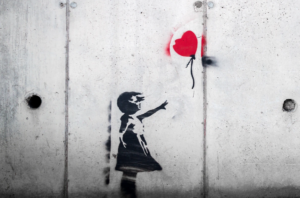
The death of a loved one is difficult for anyone. But for small children, such a loss can be confusing, hard to process and extremely frightening. Children, like adults, need time to grieve and express their emotions, but often don’t know how.
Here are some things to consider when helping children process, understand and heal after the death of a loved one:
- Model healthy grieving. It is okay for your child to see you cry. As much as we want to “shield” our children from our pain, letting out emotions is a very healthy way to cope and process a traumatic event. When you are open with how you feel, it models for them that it is okay for them to do that as well.
- Children are concrete in their thinking. To lessen confusion, avoid expressions such as “passed on” or “went to sleep.” In addition, your child may not understand the concept of “forever.” They may think that death will only last for a short time, or, they may think that people who die return soon, the way cartoon characters do. Use concrete words such as “dead” and clear wording, like “her body stopped working.” Answer their questions about death simply and honestly, but only offer details they can absorb. Avoid overloading them with information.
- Death can make children fearful about the future. Give them a chance to talk about their fears and validate their feelings. You can talk about happy memories about the person who died and focus on the positive things they got to experience. But it is important to know that it’s okay to not have an answer for them for certain questions. You can offer a simple expression of sorrow and take time to listen while they express how they feel.
- Children need healthy outlets to process grief. Whenever possible, offer choices in what they can do to memorialize the loved one and how they can express their feelings about the death. You might offer to help them draw pictures or make a memory book they can look at when they are feeling sad.
Common Reactions
Every child responds to death in his own way. These are some of the most common reactions from preschool aged children:
- Acting irritable and showing anger during unexpected situations
- Regressing to earlier developmental level behaviors (increased bedwetting, thumb-sucking, baby talk)
- Showing fear of separating (clingy)
- Having increased fears or nightmares
- Talking about death over and over (which might even take place at odd times) and using death more frequently during play
- Showing little to no concern or emotions at times when others are sharing emotions or trying to talk to them about the death
If you start to see some of these behaviors in your child, know that this may be part of them grieving and processing the death. During this time, it is important not to minimize or shame them for these behaviors, but rather be supportive, understanding and emotionally present until these behaviors start to subside.
Some additional tools you can use to help support your child include:
- These simple Scripted Stories about losing a loved one:
Losing Someone I Love (English)
Losing Someone I Love (Spanish)
- Read books about death and loss that fit your child’s age. Some titles that may be helpful for your preschooler are:
- “When Dinosaurs Die: A Guide to Understanding Death” by Laurie Krasny Brown and Marc Brown
- “I Miss You: A First Look at Death” by Pat Thomas
- “So Much to Think About: When Someone You Care About has Died” by Fred Rogers
- You may find these books helpful when preparing your child for a death:
- “Preparing the Children: Information and Ideas for Families Facing Terminal Illness” by Kathy Nussbaum
- “Living the Dying Process: A Guide for Caregivers” by Jody Gyulay
In addition, there are some amazing resources contained in the When Families Grieve free downloadable kits on the Sesame Street Workshop website www.sesamestreetincommunities.org/topics/grief/. Here are the direct links to some of the resources in the kit:
- Online toolkit with video and downloadable versions of all materials at Sesamestreet.org/Grief with:
- Parent/Caregiver’s Guide– Parent guide for supporting your child and family through grief
- Children’s Storybook, Something Small
- Printable Children’s Activities including:
- Full length videos available for download from iTunes in English and Spanish
- About Uncle Jack
- Expressing Emotions
- You Can Talk To Me
- The Memory Box
- Spanish language resources available at https://sesamestreetincommunities.org/topics/afliccion/

